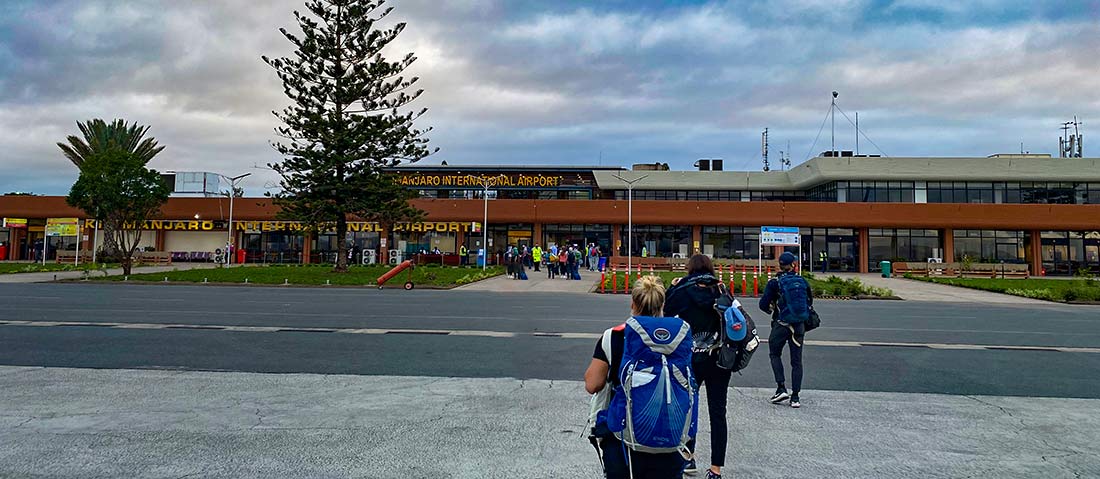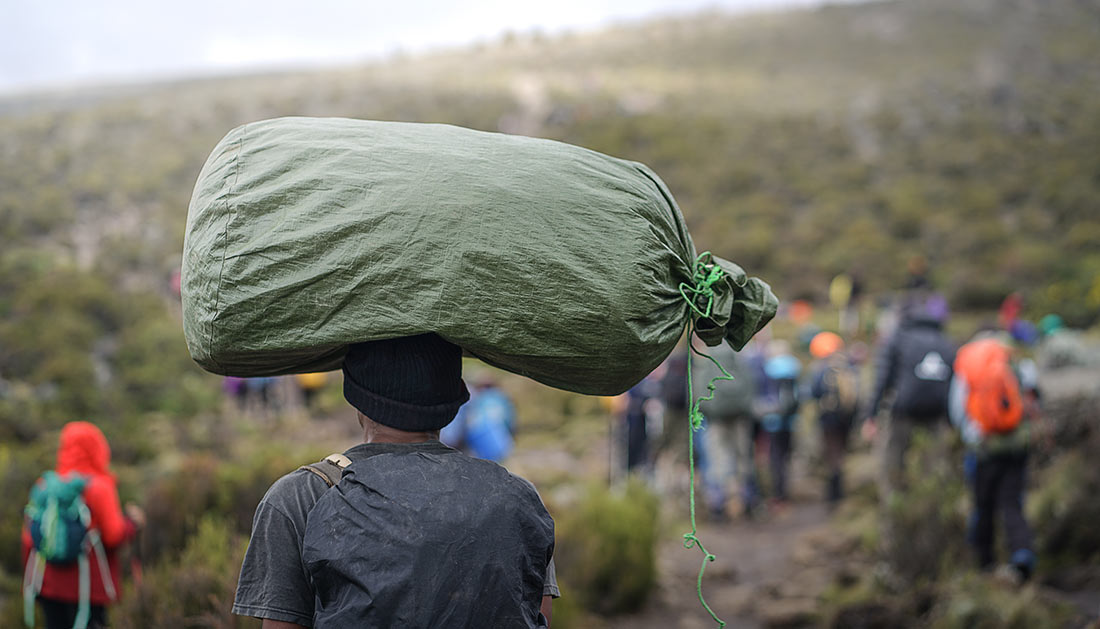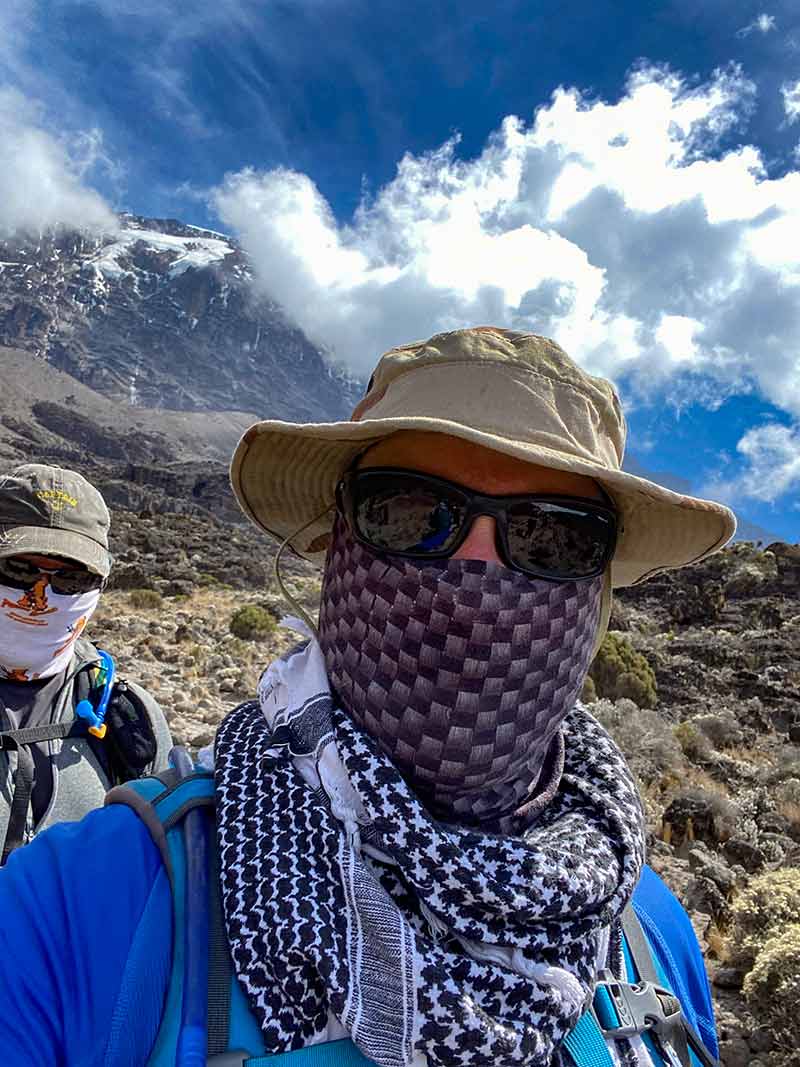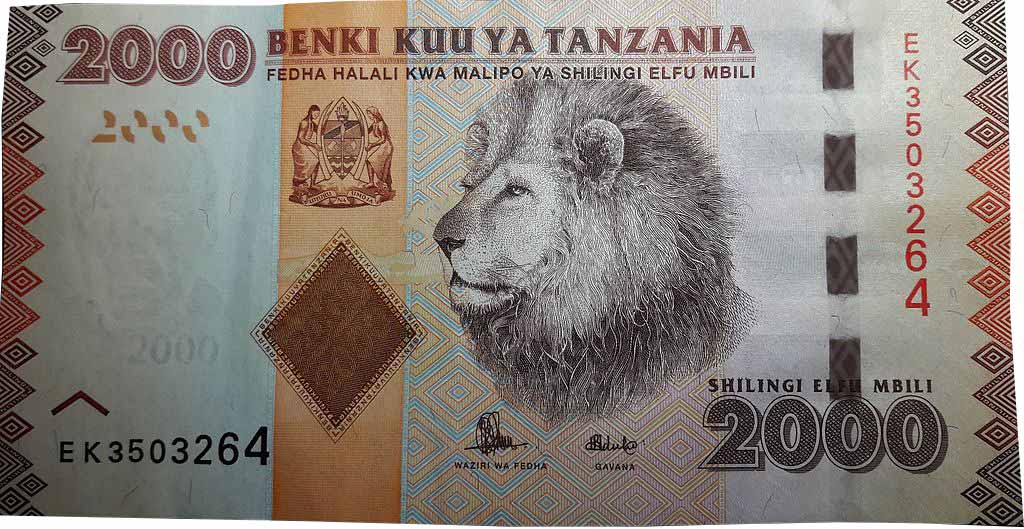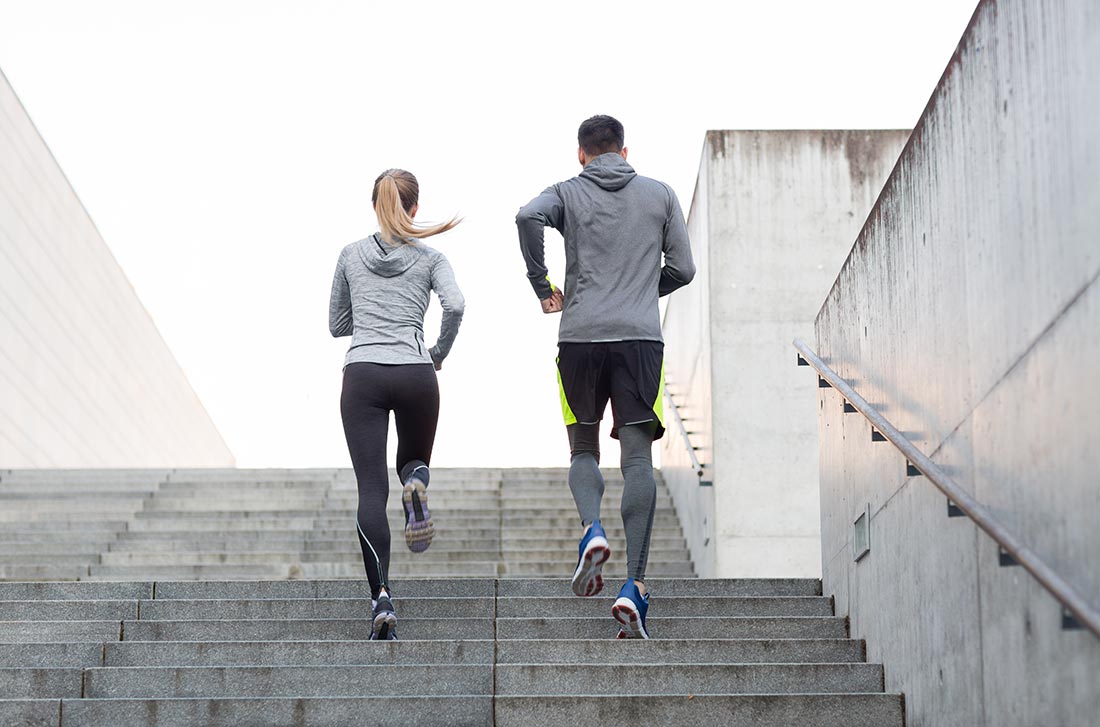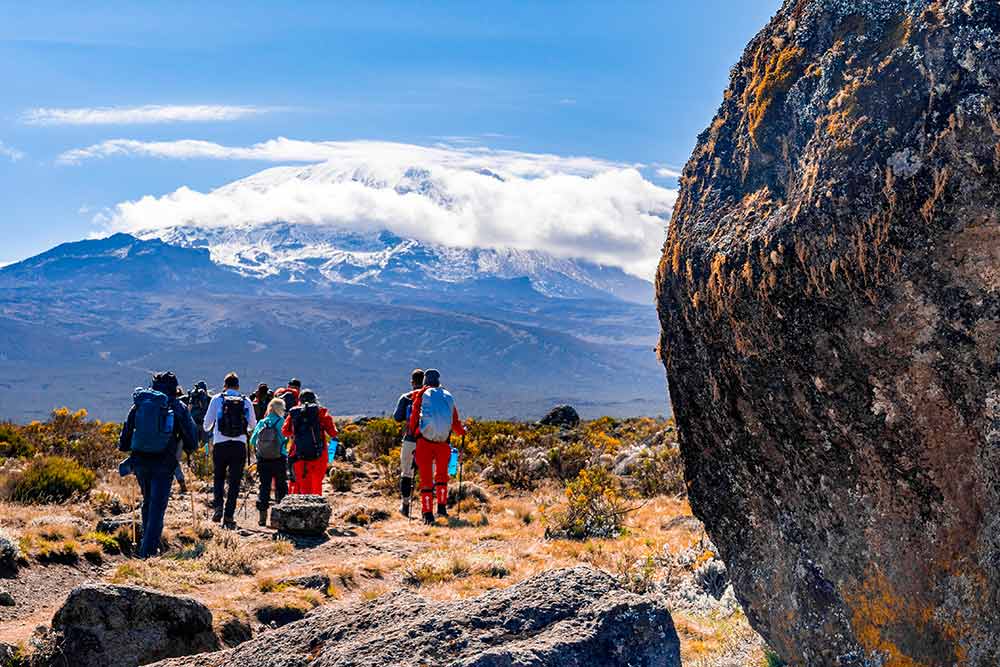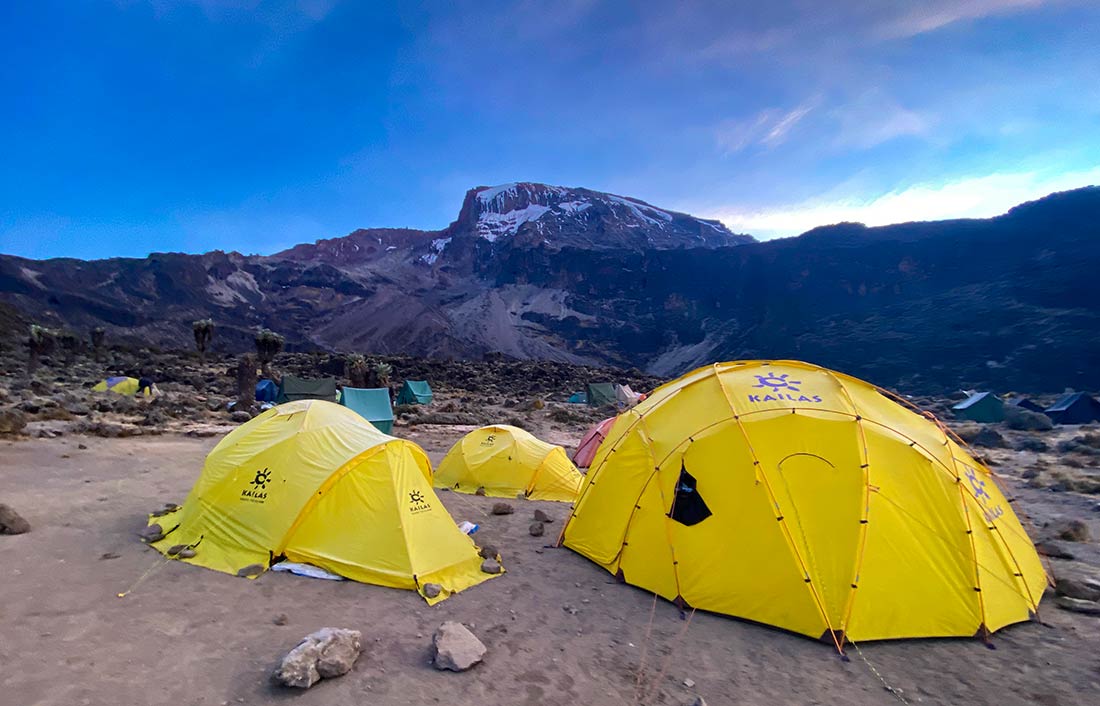The most convenient way of traveling to Tanzania is to fly to Kilimanjaro International Airport. From there, clients will take a taxi or pre-booked private transfer.
Continue readingTop 5 Mistakes People Make When Booking Their Kilimanjaro Climb
Over the years we have seen and heard many mistakes made by clients when they were heading to Tanzania. Many of them were avoidable. So without further ado, here are the top five mistakes that people make when booking their Kilimanjaro trip.
Continue readingHow Much Do You Tip on Kilimanjaro?
When traveling to Tanzania, you should bring along enough money for tipping. It is customary to tip on Kilimanjaro.
Continue readingHow to Climb Kilimanjaro Without the Crowds
Many travelers, go to Tanzania to climb Kilimanjaro. In their head, they picture a remote trek. Instead, they find the mountain is teaming with other trekkers, porters, guides, and trash. How can you climb Kilimanjaro without the crowds?
Continue readingFive Must Have Items For Kilimanjaro
You are heading to Kilimanjaro soon. Here are five must-have items that you cannot forget to take with you on Kilimanjaro.
Continue readingDo You Have to Exchange US Dollars to Tanzanian Shillings?
Do I have to exchange US Dollars (USD) for Tanzanian Shillings? No, you do not need to exchange USD for Tanzanian Shillings.
Continue readingNeed Some Motivation? How About Training to Climb Kilimanjaro?
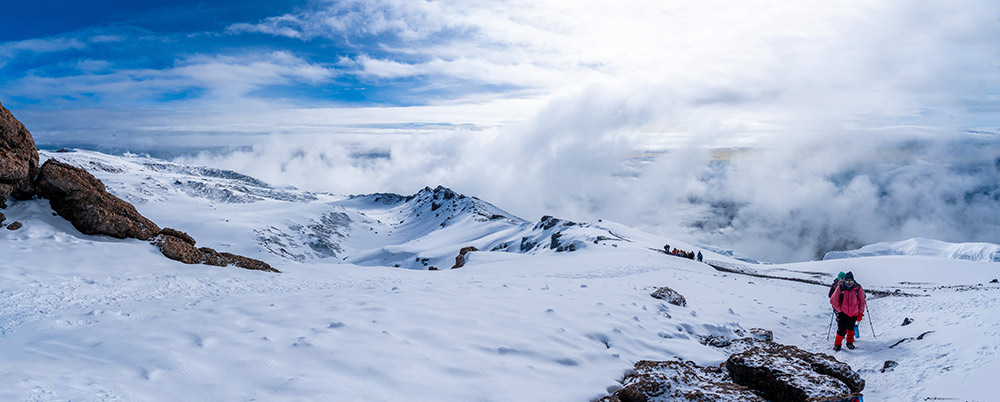
Are you ready to embark on a once-in-a-lifetime adventure and climb the highest peak in Africa, Mount Kilimanjaro? Standing at a towering height of 5,895 meters (19,341 feet), this majestic mountain presents a formidable challenge that requires not only physical endurance, but also mental strength. One key aspect that can boost your chances of summiting Kilimanjaro and fulfilling your dream is training. Training to climb Kilimanjaro can not only prepare your body for the physical demands of the climb, but it can also ignite your motivation and help you stay focused on your goal. In this post, we will explore how training can fuel your motivation to conquer Kilimanjaro.
Physical Preparation
Kilimanjaro is a challenging mountain, and being physically fit is crucial for a successful climb. Training helps you build endurance, strength, and flexibility, which are essential for navigating the rugged terrain, enduring long hours of hiking, and acclimatizing to the high altitude. Engaging in regular cardiovascular exercises such as hiking, running, or cycling can help improve your cardiovascular fitness, while strength training can enhance your muscle strength to cope with the demands of carrying a backpack and navigating steep slopes. Flexibility exercises such as stretching and yoga can improve your joint mobility and prevent injuries. By training your body, you can feel more confident and capable of taking on the physical challenges of climbing Kilimanjaro, which can fuel your motivation to push through when the going gets tough.
Mental Preparation
Climbing Kilimanjaro is not just a physical endeavor, but also a mental one. It requires mental resilience, determination, and the ability to cope with discomfort and uncertainty. Training can help you develop mental toughness, which is essential for overcoming the physical and mental challenges of the climb. Through regular physical exercise, you can learn to push through discomfort and fatigue, develop mental discipline, and build self-confidence. Additionally, spending time outdoors, hiking in varied terrain, and camping can help you get accustomed to the outdoor environment, which is essential for the Kilimanjaro climb. As you train, you will face obstacles and setbacks, just like you may encounter on the mountain. Overcoming these challenges during your training can boost your mental resilience and give you the confidence that you can tackle any challenges that may arise during the Kilimanjaro climb.
Goal Setting
Training for Kilimanjaro gives you a clear goal to work towards. Setting specific, measurable, achievable, relevant, and time-bound (SMART) goals for your training can keep you motivated and focused. For example, you can set goals to increase your endurance by hiking a certain distance or climbing a specific elevation gain each week, or to improve your strength by lifting a certain amount of weight. As you achieve these goals, you will experience a sense of accomplishment and progress, which can boost your motivation to continue training and ultimately reach the summit of Kilimanjaro. Tracking your progress and celebrating your milestones along the way can also help you stay motivated and inspired.
Team Building
Training for Kilimanjaro can also be a team effort. Joining a training group or finding a training partner can not only make your training more enjoyable and fun, but it can also provide you with support, encouragement, and accountability. Training with others can create a sense of camaraderie, and you can motivate each other to push through challenges and stay committed to your training plan. Additionally, when you climb Kilimanjaro, you will be part of a team of guides, porters, and fellow climbers. Training with others can help you build teamwork skills and foster a sense of community, which can be invaluable during the climb.
Visualization and Inspiration
Visualizing yourself standing at the summit of Kilimanjaro and imagining the sense of accomplishment and awe can be a powerful motivator. Use your training sessions as an opportunity to mentally prepare for the climb by visualizing yourself navigating the trails, overcoming challenges, and reaching the summit. You can also find inspiration from others who have successfully climbed Kilimanjaro or accomplished other challenging feats. Read books or watch documentaries about mountaineering, connect with fellow climbers through online communities or social media, and surround yourself with positive influences that fuel your motivation and determination.
Personal Growth
Training for Kilimanjaro is not just about reaching the summit, but also about personal growth and self-discovery. The journey of training and climbing a mountain like Kilimanjaro can push you beyond your comfort zone, challenge your limits, and help you discover your inner strength and resilience. It can be a transformative experience that builds your character, confidence, and self-belief. Embrace the process of training, and see it as an opportunity to become a better version of yourself. Reflect on your progress, celebrate your achievements, and learn from your setbacks. As you grow and evolve through your training, your motivation to conquer Kilimanjaro will also continue to soar.
Final Thoughts
In conclusion, training plays a crucial role in not just physically preparing for a Kilimanjaro climb, but also igniting and sustaining your motivation. It helps you develop the physical and mental strength required to conquer the challenges of the mountain, sets clear goals, builds teamwork skills, fosters personal growth, and inspires you to keep pushing forward. So lace up your hiking boots, hit the trails, and let your training to climb Kilimanjaro fuel your motivation as you embark on the adventure of a lifetime. Remember, with the right mindset, determination, and preparation, you can achieve what may seem impossible and stand on top of Africa’s highest peak!
Are you ready to book your trip of a lifetime?
Eight Steps to Make Climbing Kilimanjaro Easier
With a little research, planning, and training climbing Mount Kilimanjaro will not be as difficult as you would initially imagine.
Continue readingI Want to Climb Kilimanjaro, Where Do I Start?
How do you start planning a Kilimanjaro climb to make it an awesome experience one that you’ll remember for a lifetime? I’m sure it seems overwhelming. Read further to see how to make it much easier.
Continue readingTop Five Reasons People Fail on Kilimanjaro?
There are many reasons why people fail to make it to the summit of Mount Kilimanjaro. In this post, we will cover the top five reasons people do not make it.
Continue reading
